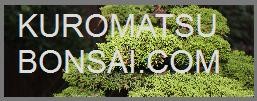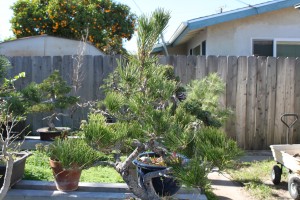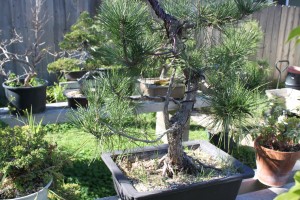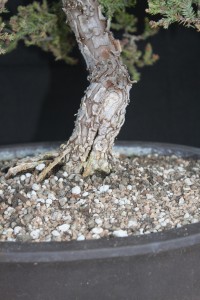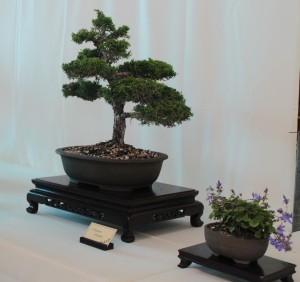How Do I Make My Bonsai Trunk Thicker
How Do I Make My Bonsai Trunk Thicker?
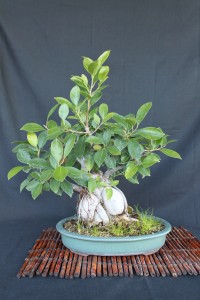
There are several techniques, depending on the variety of bonsai.
Growing in the Ground or in Large Pots
The oldest and commonest technique is to simply thicken the tree in the ground, or in a large pot or tub. Each technique has its advantages. Most trees thicken faster in the ground, because they are able to send roots farther out to seek nourishment, and the longer and thicker the roots, the thicker the trunk base gets. However, this can present a problem when it is time to lift the tree from the ground. If there are no fine roots near the base, and the tree is a variety that is sensitive to root disturbance (or just not in the habit of growing new roots from the cut off stubs of the thick ones).
There is also the problem of having ground to thicken your trees in. If you are a homeowner, then chances are, you have some yard space somewhere. The next question is, does this space meet the sun and water requirements of the trees you are trying to thicken? How is the soil? Is it fertile enough, and does it drain well enough?
Rather than create a specific “thickening farm” in your yard, it is better to just use plants that are amenable to bonsai in your landscaping. Then after a few years, you can pull the larger and thicker tree, make a bonsai out of it, and replace it with another one.
The alternative is to thicken your tree in an oversize bonsai pot or a large tub. Your tree will not thicken as fast with this method, and you will have to pay closer attention to water and fertilizer. You will also need to do yearly soil changes in order to maintain good growth. However, this method does have the advantage of giving you control over the root system, and maintaining mass of fine roots, making it easier to transition the tree into or back into a bonsai pot when the trunk is thick enough to suit you.
The biggest disadvantage of the above method is, unless you are using something really fast growing like a Ficus or a Chinese Elm, it can take years. The above method is obviously not for those folks who have one bonsai, or just a few, and are looking for an “instant enhancement” to appearance.
Sacrifice Branches:
The best way to thicken a trunk base, in conjunction with the above technique, is to run one or more sacrifice branches. A sacrifice branch is a branch that is allowed to get as long and as thick as possible, and its sole purpose is to cause the trunk to thicken. When the trunk reaches the desired thickness, the sacrifice branch is cut off. This technique is most often used with Pines, but can also be used with other species. Typically you run a sacrifice branch off the top of the tree in order to thicken the entire trunk, and you run a sacrifice branch off the base to thicken just the base. Below are photos of sacrifice branches on Pine bonsai. One note about running sacrifice branches from the base on a Pine: Pines are apically dominant, which means that they put all their growth energy into the top of the tree, often at the expense of lower branches. This means that you have to go out of your way to persuade the tree to put energy into the sacrifice branch. One extreme technique to do this is to train a base sacrifice branch upwards so that it gets plenty of light, and so that the tree sends plenty of sap to the top of it. You can even train the sacrifice branch to be bigger and taller than the rest of the tree, resulting in a really massive trunk base.
Tourniquet:
There is an old method that the Japanese use, where a wire tourniquet is placed around the base of a tree in order to induce a swelling. You will get results quickly, usually in one growing season. This is especially true if you apply this to fast growing material. Below is a photo of a Chinese Elm which was subjected to this method sometime in the past. The effect on the trunk is noticeable, but so is the scar left by the tourniquet. This method causes a thickening at the base only, and is most useful to create a tapered trunk in a species that does not naturally taper, such as the Chinese Elm. Use this method with caution, as it leaves a permanent scar.
Splitting the Trunk From the Base
This is one method which produces instant results. It is also a method that should only be used on trees which will tolerate and heal around traumatic injuries, such as Junipers, Elms, Boxwood, and most varieties of Ficus. The technique is exactly what it sounds like: You pull the tree out of the pot (Only do this at the beginning of the growing season), wash all the soil off the roots, and split the trunk from the bottom up with a wood chisel, a saw, or a rotary tool, or a trunk splitter. Once the split is made, you may need to use wire or wedges to hold it apart. Then repot the tree and let it heal. Using an oversize pot should speed the healing process. Below is a photo of a Procumbens Juniper which was subjected to this technique in order to cure a reverse taper at the trunk base. This is a very slow growing variety of Juniper, and it has taken nearly fifteen years for it to heal to the state it is shown in here. However, splitting the trunk did produce an instant visual improvement in the tree when it was done.
Intentional Scarring:
A Pine or Juniper trunk can also be thickened by using a knife to carve vertical lines through the bark down to the sap layer. This produces an injury which the tree heals, and this produces scar tissue, which thickens the trunk. The Juniper bonsai shown below had a reverse taper at mid trunk which was cured in this manner. This tree required only a single scarring, which was repeated once in a two year period, to cure the reverse taper. You can thicken a trunk at the base by carving three or four scars around the circumference of the trunk and letting them heal.
Now For Some Other Techniques:
These other techniques have been used by some prominent Japanese bonsai Masters. However, they can be risky and dangerous, so use them with caution:
Pounding on the base of the tree with a Hammer: The author has not tried this, and suggests only using this on a tree that you feel you can afford to lose.
Drilling holes in the base of the tree: This one was used by some Japanese masters, and based on photographic evidence, appears to work pretty well. In the photos the author saw, the work was done on a Japanese White Pine. One note: This technique may be problematic on a Black Pine, because it is likely to leave some interesting looking scars. White Pines have smooth bark, and scarring is likely not to be noticeable on them for that reason. This might be a good technique for Junipers – it should work similarly to scoring the trunk, except to produce a localized thickening around the drill site.
